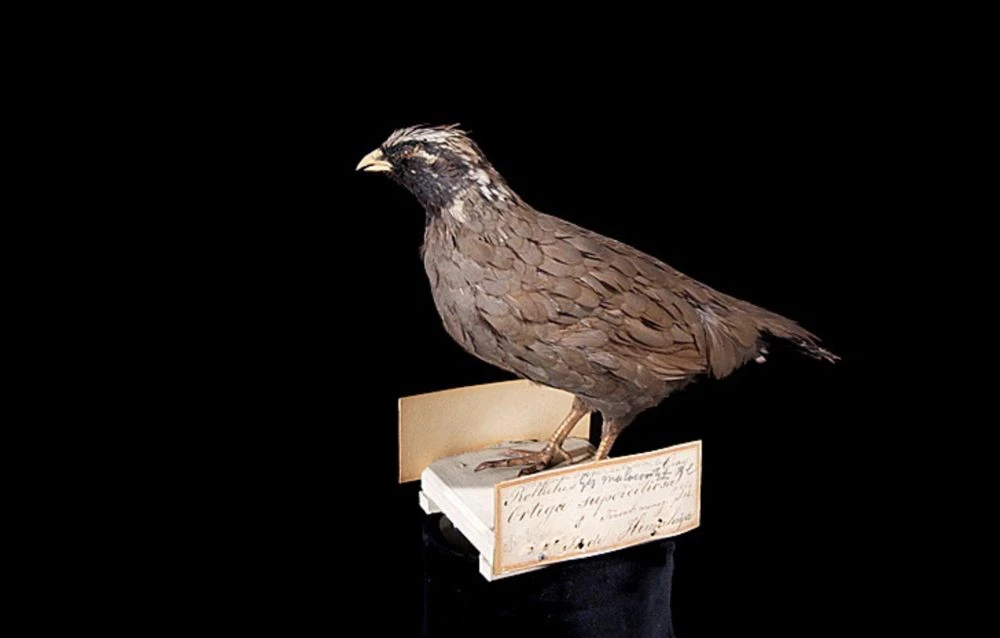White-bellied Heron. (Photo Courtesy: Samanvitha Rao)

Shakti Swarup Dash
Birds are nature’s poets,their songs weaving tales of freedom and joy. With feathers that shimmer like moonlit whispers and wings that dance on the breeze, they embody the essence of liberty. In the lush canopies of North East India’s verdant landscapes, their melodies echo the region's rich cultural heritage. From the majestic Himalayan Griffon soaring above the mountains to the vibrant Plum-headed Parakeet flirting through the forests, each species adds a stroke of brilliance to the region's avian canvas. The Brahmaputra’s waters attract an array of waterbirds. But the majority of them are facing the danger of extinction due to habitat loss and over exploitation. They need our helping hands before they breathe their last breath on earth. This article enumerates descriptions of some critically endangered birds on the IUCN Red List.
1) White bellied Heron (Ardea insignis):- It is also known as the imperial heron. It has a uniform dark grey plumage, a whitish belly and long sliver or whitish plumes on the rear crown and lower foreneck. Its face is greenish grey and the long bill black, but greenish near the base and tip; the iris is yellow and legs and feet are full grey. It is the world's second-largest heron. During the breeding season, it calls during early morning hours, with the highest call density shortly before sunrise. During the day, it roosts for long periods of up to six hours on bare sandy patches, large rocks, logs and trees.
They are patient hunters standing motionless for long periods near the water's edge, waiting to ambush prey. They play a crucial ecological role in maintaining the health and balance of the wetland ecosystem.
2) Himalayan Quail (Ophrysiasuperciliosa):- It is also known as the mountain quail. It is a medium sized quail belonging to the pheasant family. The red bill and legs of this small dark quail and white spots before and after the eye make it distinctive. The make is dark grey with bleak streaks and a white forehead and supercilium(eyebrow stripe). The female is brownish with dark streaks and greyish brow. It has long tail coverts and the ten feathered tail is longer, nearly as long as the wing than in most quails. The feathers of the forehead are bristly and stiff. It's considered one of the most enigmatic birds in the world. Its habitat is steep hillsides covered by long grass.

On average, it can lay around 200-300 eggs per year. It is so rare that it vanished before most ever knew it existed. Its shy nature and remote habitat kept it hidden from sight. Despite no confirmed sightings in over a century, whispers of its presence still echo among locals and trekkers.
3) Spoon billed Sandpiper (Calidris pygmaea):- The most distinctive feature of this species is its spatulate bill. Its bill is not just spoon-shaped, but also has a sensitive tip that helps it detect prey in the mud. This specialized bill is used to probe into mud and catch small invertebrates such as tiny crustaceans and molluscs. The breeding adult bird has a red-brown head, neck and breast with dark brown streaks and blackish upperparts. Non breeding adults lack the reddish colouration. The underparts are white and the legs are black. Its feeding style consists of side-to-side movement of the bill as the bird walks forward with its head down. It migrates from its breeding grounds in the Russian Far East to its wintering grounds in South east Asia covering over 8000 km each way.
Learn more about birds at https://early-bird.in/the-wonder-of-birds






